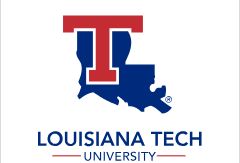Date of Award
Spring 2004
Document Type
Dissertation
Degree Name
Doctor of Education (EdD)
Department
Curriculum, Instruction, and Leadership
First Advisor
Jo Ann Dauzat
Abstract
The purpose of this study was to examine the possible relationship among faculty computer self-efficacy, technology professional development, and the extent of technology use in Louisiana's college and university classrooms. Additionally, faculty computer self-efficacy and teacher candidate computer self-efficacy were compared.
Participation was voluntary, involving higher education faculty and teacher candidates from the nineteen teacher preparation institutions within Louisiana. Faculty completed online surveys. A 30-item Likert-type scale was used to measure computer self-efficacy. Faculty also reported their involvement in technology training over the last five years and their technology use in the classroom. Teacher candidates completed either an online or print copy of the computer self-efficacy survey.
Data analysis involved a factor analysis of the computer self-efficacy scale, the identification of five computer self-efficacy constructs, a 4 x 3 ANOVA, and contingency coefficients to determine the correlation of nonparametric items.
Results of this study indicate a significant relationship between faculty computer self-efficacy and the extent of technology use. A significant relationship between technology professional development and technology use was also detected. Analysis of the data failed to confirm an interactive effect between faculty computer self-efficacy and technology professional development related to technology use. Results suggest an inverse relationship between tenure and computer self-efficacy, with observed tenured faculty members' computer self-efficacy scores lower than expected scores. The results of this study also found no difference in faculty members' computer self-efficacy and teacher candidates' computer self-efficacy.
Recommended Citation
Callaway, Rebecca A., "" (2004). Dissertation. 633.
https://digitalcommons.latech.edu/dissertations/633

